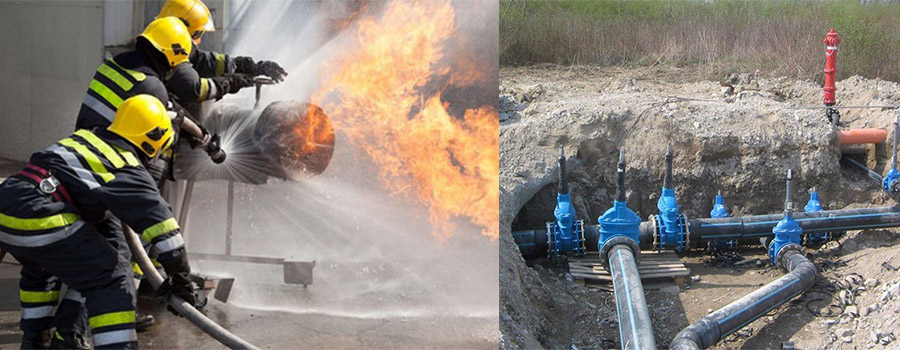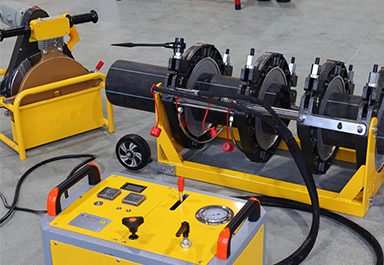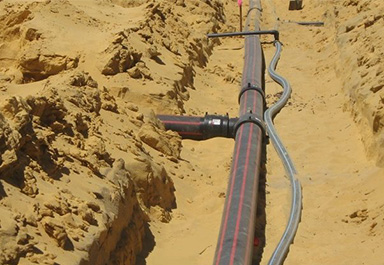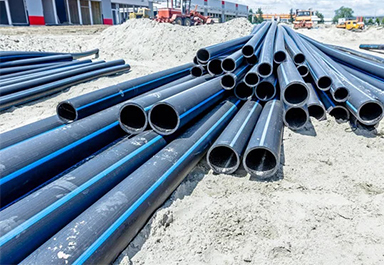27
Dec
Advantages of HDPE Pipes in Fire Fighting Systems
HDPE pipes, known for their durability and flexibility, are made from high-density polyethylene. These pipes are widely used in various applications, but HDPE Pipes in fire fighting systems is particularly noteworthy. The PE100 and PE80 designations refer to the density and strength of the material, Both grades are suitable for fire fighting
In fire safety management, the effectiveness of fire fighting systems heavily depends on the quality and suitability of the materials used. High-Density Polyethylene (HDPE) pipes, particularly those conforming to PE100 and PE80 standards, have become a standout choice due to their superior properties. This article aims to provide a detailed overview of HDPE pipes in fire fighting applications, highlighting the differences between PE100 and PE80 pipes and exploring their various advantages, applications and jointed fittings.
Benefits of PE100 and PE80 Pipes in Fire Systems
- Durability and Corrosion Resistance: HDPE pipes are highly resistant to corrosion, an essential feature in fire fighting environments where water can be highly pressurized and potentially corrosive. This longevity ensures reliable operation over time.
- Flexibility and Ease of Installation: The flexibility of HDPE pipes, including both PE100 and PE80, simplifies installation, especially in challenging terrains or tight spaces. Their lightweight nature also contributes to reduced transportation and handling costs.
- High Pressure Tolerance: PE100 pipes, in particular, are designed to withstand high pressure, making them ideal for high-demand fire fighting applications. PE80 pipes also perform well under pressure, though they are more suited to lower pressure environments.
- Environmental Sustainability: HDPE is a recyclable material, making these pipes a more environmentally friendly option compared to traditional materials.

PE100 vs. PE80 Pipes: A Comparative Analysis
| Feature | PE100 Pipes | PE80 Pipes |
|---|---|---|
| Material Strength | Higher pressure rating, suitable for high-demand situations | Lower pressure rating, ideal for moderate applications |
| Durability | Longer lifespan due to higher density | Slightly less durable than PE100, but still robust |
| Flexibility | High flexibility, easier to maneuver during installation | Similar flexibility, accommodating various installation needs |
| Environmental Impact | Highly recyclable, minimizing ecological footprint | Also recyclable, contributing to sustainability |
Applications of HDPE in Fire Safety
> Water Supply to Fire Sprinkler Systems
> Main Water Supply Lines
> Underground Fire Hydrant Systems
> Portable Water Delivery
Fittings: Enhancing Efficiency and Reliability
√ Butt Fusion Fittings: Offer strong, seamless connections, crucial for maintaining a leak-proof system.
√ Electrofusion Fittings: Easy to install, they provide a robust bond, suitable for complex piping networks.
√ Mechanical Fittings: These are adaptable, great for temporary or adjustable fire fighting setups.
The integration of HDPE pipes, particularly those of the PE100 and PE80 grades, into fire fighting systems offers a blend of durability, efficiency, and environmental sustainability. These pipes not only meet the rigorous demands of fire safety but also contribute to a more effective and reliable fire protection strategy. As the industry continues to evolve, HDPE pipes remain a top choice for professionals seeking advanced solutions in fire fighting applications.






